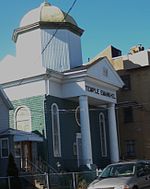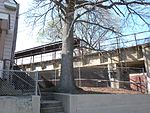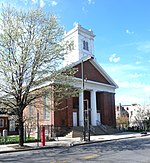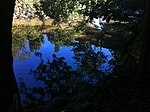Church of the Blessed Sacrament (Staten Island)
20th-century Roman Catholic church buildings in the United StatesChristian organizations established in 1910New York City church stubsRobert J. Reiley church buildingsRoman Catholic churches completed in 1953 ... and 2 more
Roman Catholic churches in Staten IslandStaten Island building and structure stubs
The Church of the Blessed Sacrament is a Roman Catholic parish church in the Roman Catholic Archdiocese of New York, located at Forest Avenue at Manor Road, Staten Island, New York City, in the neighborhood of West New Brighton, Staten Island. The parish was established in 1910.
Excerpt from the Wikipedia article Church of the Blessed Sacrament (Staten Island) (License: CC BY-SA 3.0, Authors).Church of the Blessed Sacrament (Staten Island)
Manor Road, New York Staten Island
Geographical coordinates (GPS) Address Nearby Places Show on map
Geographical coordinates (GPS)
| Latitude | Longitude |
|---|---|
| N 40.627333333333 ° | E -74.126075 ° |
Address
Blessed Sacrament School
Manor Road
10314 New York, Staten Island
New York, United States
Open on Google Maps








